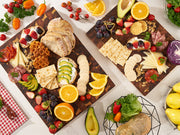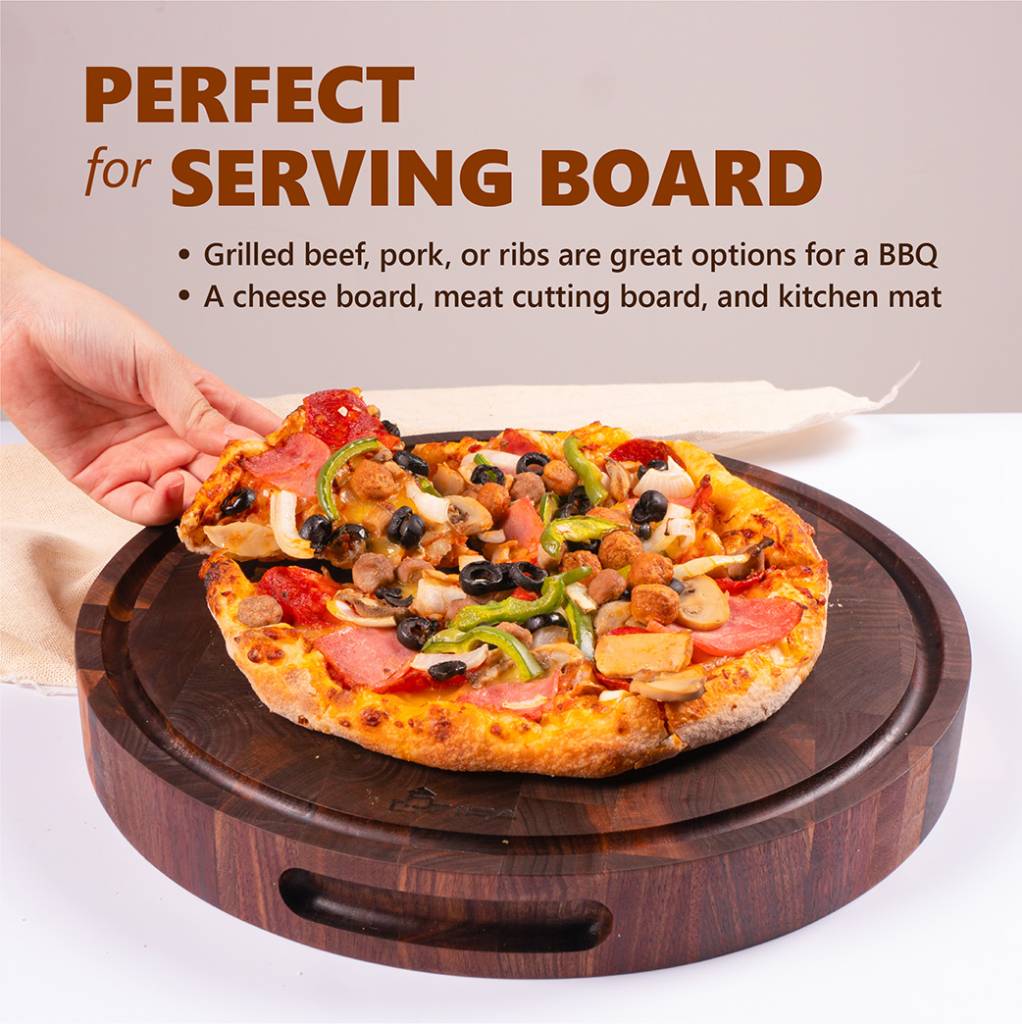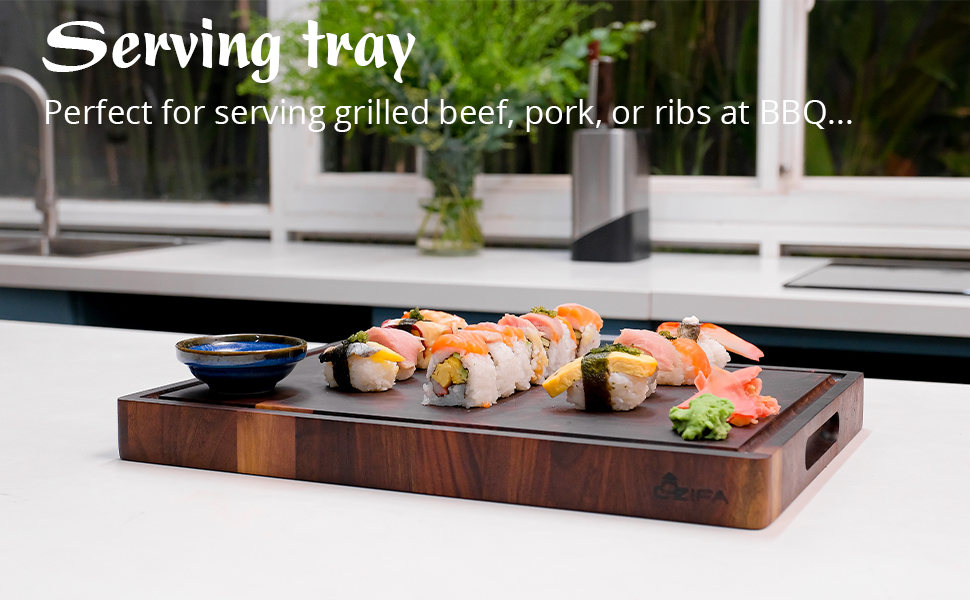
Wooden cutting boards are a staple in every kitchen, serving as a reliable tool for preparing ingredients and chopping various food items. However, their usefulness extends beyond the realm of meal preparation. In this blog post, we will explore the multifunctional nature of wooden cutting boards, focusing specifically on their role as serving trays. Discover how these simple yet elegant kitchen essentials can elevate your dining experience.
Aesthetic Appeal
Wooden cutting boards possess a timeless beauty that adds a touch of warmth and natural charm to any setting. When repurposed as serving trays, they become an eye-catching centerpiece for your table. The rich tones and unique patterns of the wood create an inviting backdrop for your culinary creations.


Versatile Serving Options
Whether you’re hosting a casual brunch or an elegant dinner party, wooden cutting boards can accommodate a wide range of serving options. From artisanal cheeses and charcuterie spreads to freshly baked bread and appetizers, these boards provide a rustic and inviting presentation for any type of cuisine
Functional Design
One of the key advantages of using a wooden cutting board as a serving tray is its practical design. The raised edges of the board prevent food items from sliding off, ensuring a secure and mess-free serving experience. The natural durability of the wood also makes it suitable for carrying heavier dishes without the risk of warping or damage

Easy to Maintain
Maintaining the functionality and beauty of a wooden cutting board also applies when using it as a serving tray. Regular cleaning with mild soap and warm water, followed by proper drying, helps prevent the growth of bacteria and keeps the board in optimal condition. Additionally, occasional oiling with food-grade mineral oil helps maintain the wood’s luster and prevents it from drying out.

Sustainable and Eco-Friendly
Maintaining the functionality and beauty of a wooden cutting board also applies when using it as a serving tray. Regular cleaning with mild soap and warm water, followed by proper drying, helps prevent the growth of bacteria and keeps the board in optimal condition. Additionally, occasional oiling with food-grade mineral oil helps maintain the wood’s luster and prevents it from drying out.
In conclusion, the functionality of wooden cutting boards extends beyond their traditional role in the kitchen. By repurposing them as serving trays, you can enhance the visual appeal of your dishes while maintaining practicality and ease of use. Their versatility, charming aesthetics, and eco-friendly nature make wooden cutting boards an ideal choice for elevating your dining experience. So, the next time you reach for your beloved cutting board, consider its potential as a stunning serving tray.







